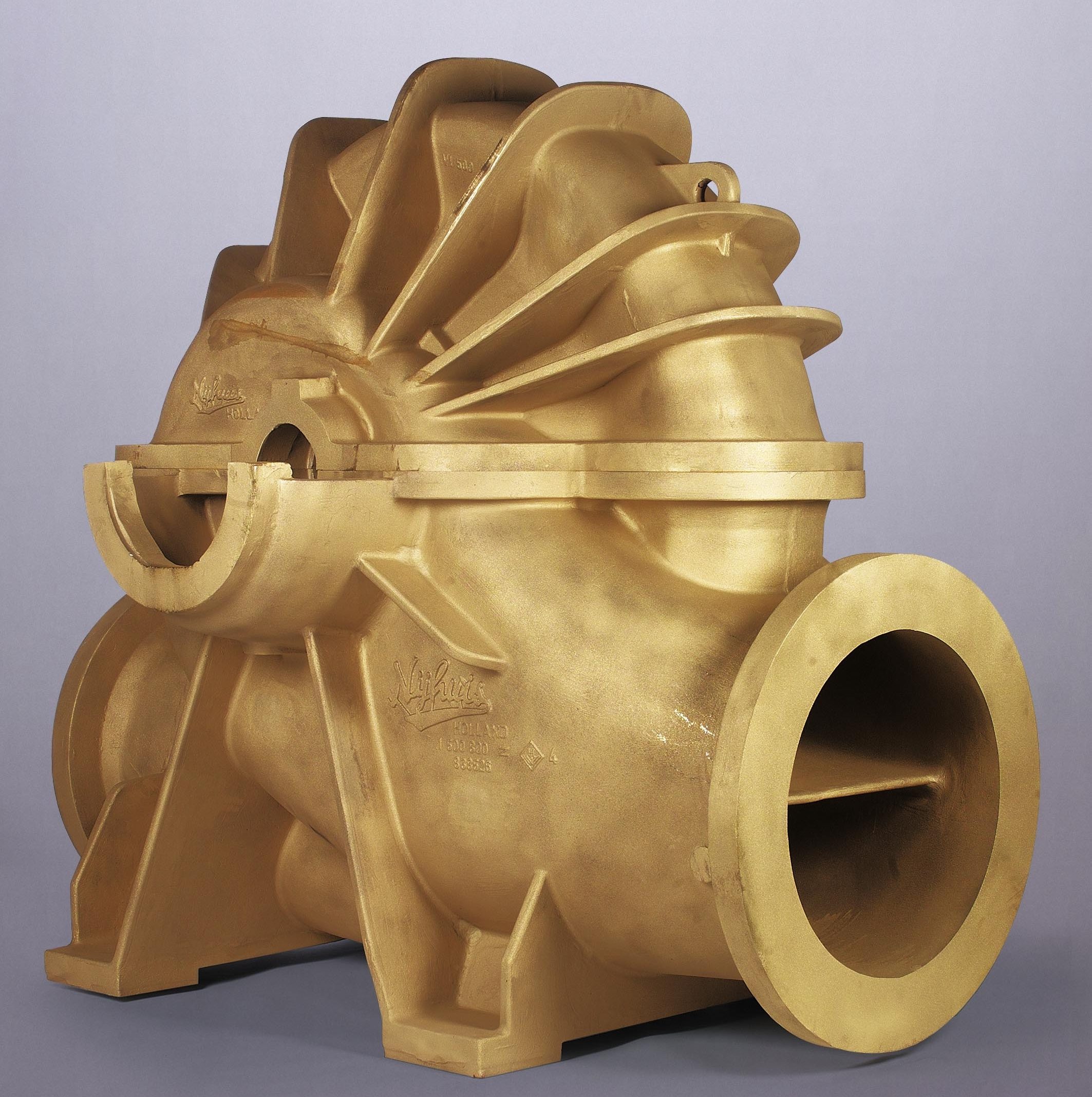Copper-tin-zinc alloys (gunmetal)
The largest application group in terms of quantity within the bronzes are the copper-tin-zinc casting alloys. They are used in the construction industry for fittings and screw, solder and press fittings in the field of sanitary and heating technology. There they are also characterised by their high corrosion resistance. Additives of zinc are of great importance for copper-tin casting alloys. Many of these alloys contain zinc as a third alloying element and make up the group of copper-tin-zinc casting alloys (gunmetal). The usual copper-tin-zinc casting alloys have zinc contents of up to 9%. The copper corner of the copper-tin-zinc system has been studied extensively and is relatively well known. Due to segregation phenomena, a heterogeneous structure is to be expected in cast alloys even at low tin contents. Zinc additions increase the (α+δ) content in the cast structure. However, the α-phase space can be expanded with a homogenising annealing. Most copper-tin-zinc casting alloys also contain up to 7% lead, which is insoluble in all these copper alloys in the solid state. Both the copper-tin casting alloys and the copper-tin-zinc casting alloys sometimes have some nickel added to reduce the wall thickness dependence of the strength and to increase the toughness, or lead to improve the machinability.

Applications
Tin bronzes offer a range of applications due to their versatile and interesting properties. While many are corrosion and seawater resistant, there are a number of alloys with good sliding and emergency running properties, and some also have high wear resistance and cavitation resistance. In mechanical engineering and general technology, refrigeration, oxygen, superheated steam, high-pressure and acid fittings, pump bodies and valves, plain bearings, piston rods, worm, screw and gear wheels are often made of cast copper-tin alloys. Copper-tin-zinc casting alloys are processed for the building industry into fittings and screwed, soldered and pressed fittings in the field of sanitary and heating engineering. Furthermore, components made of these alloys are used in hydraulic systems, in the production of liquid gas and in drive technology, where they are used as plain bearings and gear wheels. The copper-tin-lead casting alloys are used, among other things, as materials for plain bearings and for fittings resistant to sulphuric acid. Due to the corrosion requirements of seawater, shipbuilding processes copper-tin and copper-tin-zinc casting alloys for fittings, pump bodies, meter housings and other parts exposed to seawater. In automotive engineering, tin bronzes are used for petrol pumps, for example. In the chemical and food industries, tin bronze moulded parts are used for corrosion- and wear-resistant and sulphuric acid-resistant valves, valve seats, impellers and pump bodies.
Are you looking for a different content?